This article contains major spoilers for the Netflix series Hollywood.
Ryan Murphy’s latest collaboration with Netflix, the glamorous and over-the-top Hollywood, debuted on the streaming platform last week, and has already been met with a mixed reception.
While many critics – including us! – loved the much-needed escapism the series provided, many felt its attempts to rewrite history were a little slapdash and overly cheesy.
“I wanted to do a show about buried history,” Ryan Murphy previously told the New York Post, when asked about his decision to present an alternative version of Hollywood’s “golden era”. “And I wanted to ask a big, revisionist history question, which was: ‘If these people who were allowed to be who they were in the late 40s and get that image up on the screen, would it change the trajectory of Hollywood and would it trickle down and change my life as a gay kid growing up in the 70s who felt that I had no role models?’”
With many questioning which of the events depicted in Hollywood really did happen, and which were merely creations of the writers’ imaginations, here’s what we were able to dig up...
The main characters

Hollywood begins by introducing us to Jack Castello (David Corenswet), as he sets off on his journey to stardom, encountering director Raymond Ainsley (Darren Criss), aspiring screenwriter Archie Coleman (Jeremy Pope) and future co-stars Claire Wood (Samara Weaving) and Camille Washington (Laura Harrier).
Then there’s studio executives like Avis Amberg and Ellen Kincaid (name a more iconic duo than Patti LuPone and Holland Taylor) and Dick Samuels (Joe Mantello).
Although Ryan Murphy and the actors have said that many of the characters are influenced by real figures from Hollywood, they’re all completely fictional. In fact, of the main cast, only Rock Hudson (Jake Picking) and Henry Willson (Jim Parsons) are real people. More on them later, though...
Extras gathered outside the Ace Studios gate
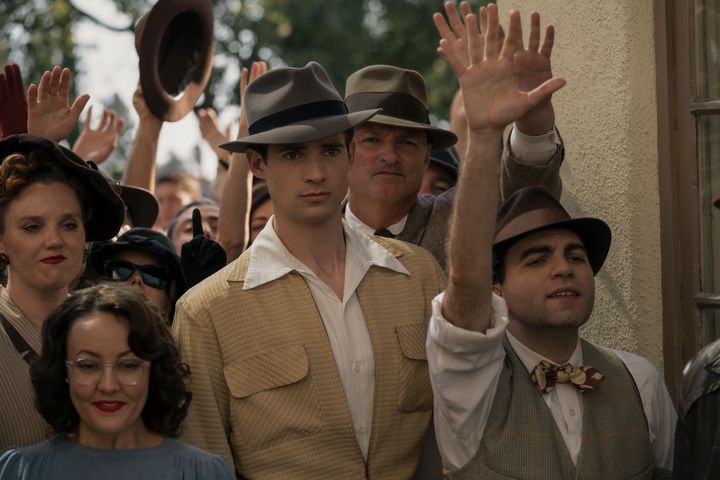
One of the first times we meet Jack, he’s part of a swathe of people outside of the Ace Studios gate, hoping he’ll be hand-picked to be an extra, setting him on his path to the silver screen.
While Ace Studios is completely fictional, this is an actual practise that used to happen outside the Paramount Studios in the era Hollywood is set, with hopefuls trying to get themselves spotted by studio execs.
And to be fair, it often worked, with this being how many extras were cast in the studio’s films at that time.
The Golden Tip gas station
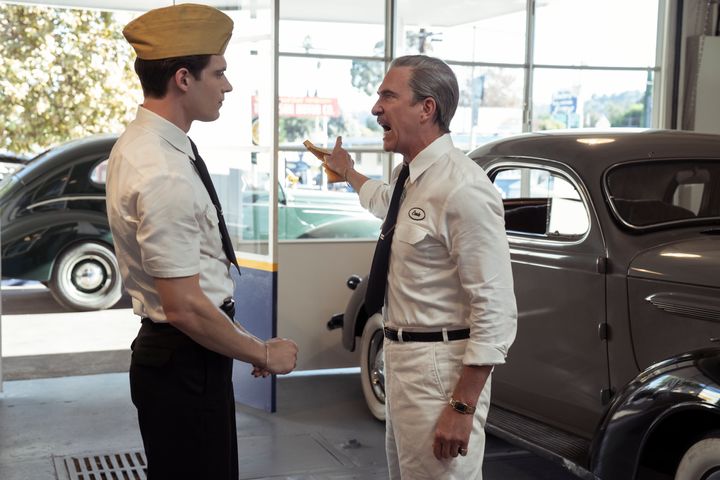
Before long landing a film role, Jack finds himself working at the Golden Tip gas station to try and earn himself a bit of extra cash, a car garage where the wealthy people of Hollywood come to him for an extra *ahem* service.
Behind the whole operation is Ernie (frequent Ryan Murphy collaborator Dylan McDermott), who proudly runs the business. Customers can request to be taken to “Dreamland” as a codeword for sex, as Rock Hudson does in his first meeting with Archie.
Although the Golden Tip gas station and Ernie are both fictitious, they’re based on the real-life experiences of Scotty Bowers, a former Marine who ran a similar establishment out of a petrol station in Hollywood.
Cole Porter

Scotty Bowers wrote about his experiences running his petrol station/Hollywood brothel in a 2012 memoir, which was later turned into a documentary.
In the book, Scotty names a number of high-profile clients, including music legend Cole Porter, who was also depicted in one scene paying a visit to the Golden Tip gas station.
Rock Hudson

Another of the celebrities named in Scotty’s book was Rock Hudson, so it’s fitting that the first time we meet the actor in the show – when he’s still known as Roy Fitzgerald – it’s when he’s asking Archie for a trip to “Dreamland”.
Much of Rock Hudson’s back story is actually the same as it is depicted in Hollywood – he was given his stage name after signing with infamous talent manager Henry Willson, who later pushed him into working on his physique and having his teeth done.
Even things from the show you mightn’t expect to be real are true, including the fact one of his first on-screen roles required 27 takes for him to get his one line right (apparently he kept saying “backboard” instead of “blackboard”).
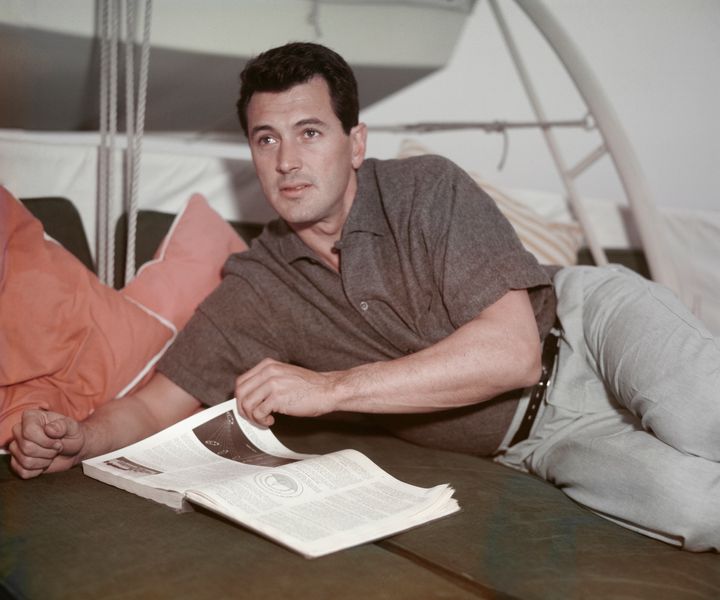
The one big difference between the real and fictitious Rock Hudson is that the never actually came out as gay in his lifetime, his sexuality only revealed following his death from AIDS-related complications in 1985.
In fact, during his lifetime he was briefly married to one of Henry Willson’s secretaries, with the manager repeatedly fending off details of the truth about his client’s sexuality winding up in the papers.
“Imagine if he was allowed to be gay and he was the first [gay movie star]. Not only would he have been happier, but imagine all of the people who would have had a role model,” Ryan Murphy told the NY Post, of his decision to have Rock Hudson come out in the final episode.
Anna May Wong
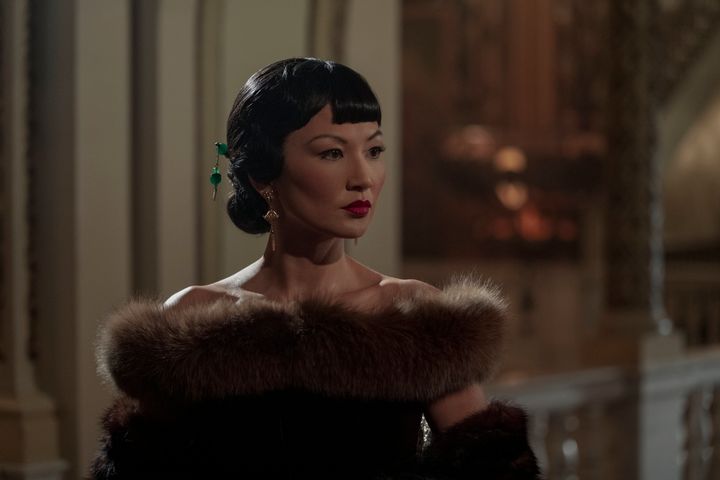
Like Rock Hudson, some of Anna May Wong’s story played out exactly in real life as it did in the TV show Hollywood – most notably, her being invited to audition for the lead role in The Good Earth, for a Chinese role that ultimately went to white actress Luise Rayner, who later won an Oscar for it.
Sadly, though, things in the real Anna May’s film career ended up being very different.
Like her Hollywood counterpart, Anna May grew disillusioned with the limitations that being an actress of colour had on her film career as a result of producers’ prejudices, and put her big-screen career on hold.
“I was so tired of the parts I had to play,” she told Film Daily, way back in 1933. “Why is it that the screen Chinese is nearly always the villain of the piece, and so cruel a villain—murderous, treacherous, a snake in the grass? We are not like that... I got so weary of it all—of the scenarist’s concept of Chinese characters.”
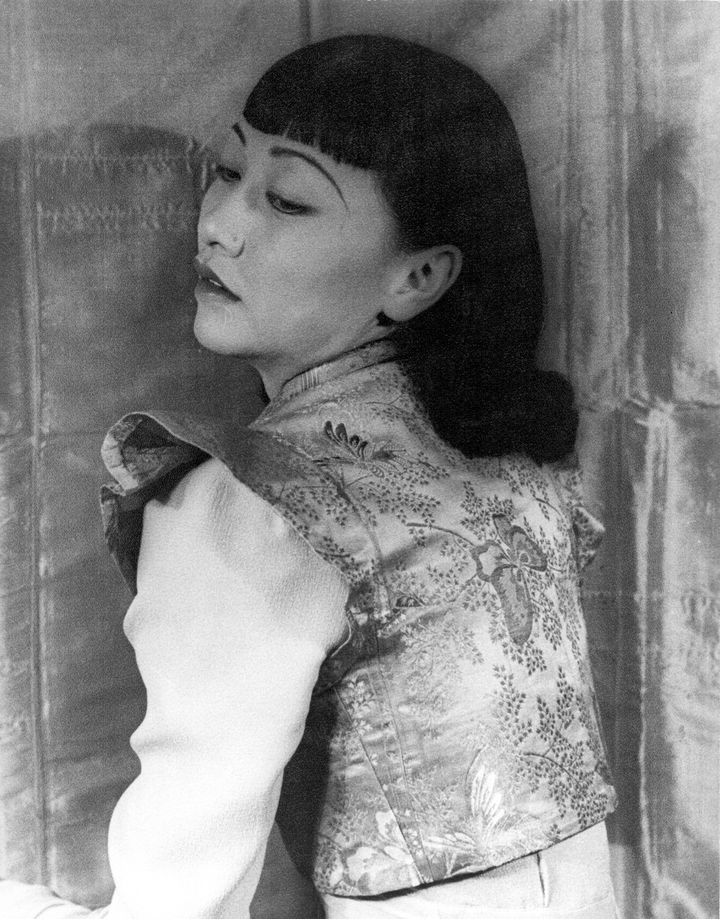
Ryan Murphy has said Hollywood is his way of “giving some people who were dealt a terrible hand by Hollywood a happy ending”, and there’s no question Anna May is one such figure.
In the finale, the character becomes the first woman of Chinese descent to win an Oscar for acting, though in reality, this is a milestone that is shockingly still to be achieved.
Peg Entwistle
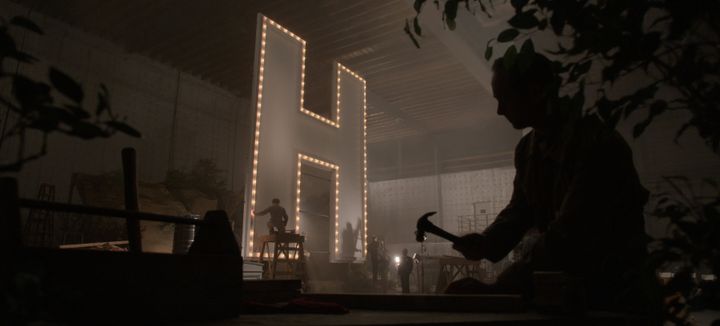
Peg Entwistle wasn’t actually a character in Hollywood, but her true story did become a centrepoint for the show.
Originally from Wales, Peg moved to California to pursue a film career, but grew disillusioned with Hollywood early on.
As depicted in the show, Peg took her own life after most of her scenes were cut out of the film Thirteen Women, with her suicide note being featured in the show exactly as written.
In the same way Ryan Murphy tried to give an alternative ending to the likes of Anna May Wong and Rock Hudson, Hollywood sees Archie reimagining Peg’s story, by her ultimately not killing herself, deciding this will be more empowering to young women watching.
Henry Willson’s behaviour
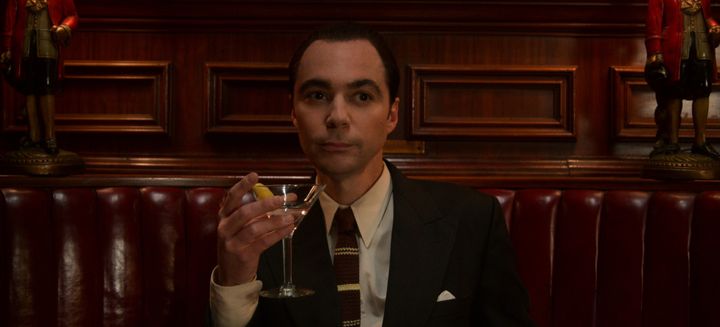
Viewers got to see a very different side to The Big Bang Theory’s Jim Parsons when they were introduced to his Hollywood character, Henry Willson.
Willson really was Rock Hudson’s manager, and by all accounts, his dealings were just as shady as depicted in Hollywood.
The biography The Man Who Invented Rock Hudson: The Pretty Boys And Dirty Deals Of Henry Willson outlines a lot of the behaviour portrayed in the Netflix series, most notably him taking advantage of many young men who had been hoping to get ahead in Hollywood.
Variety has also described Willson as having had a reputation at the height of his success for being “predatory”, and “luring” young men into working with him, by promising to make them a star as long as they “did what he said”.
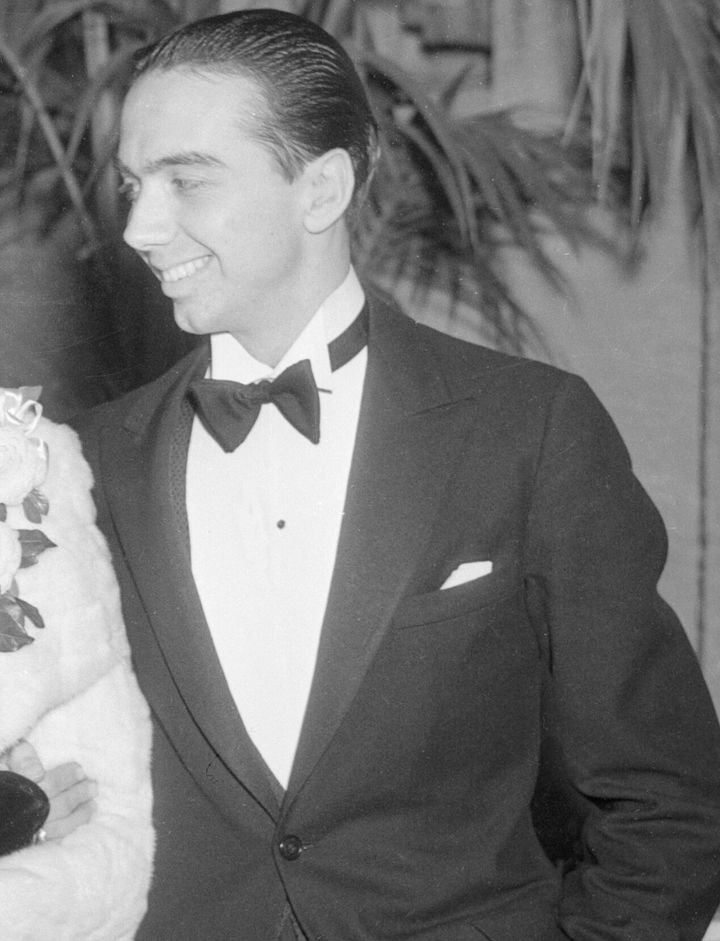
“Henry Willson was one of the great monsters in Hollywood history,” Ryan Murphy has said. “He would go after the same type of guy and promise them stardom by forcing them to sleep with him. Or watch them sleep with other people.”
Other details from Willson’s life were kept in the show, too, including his real relationship and his rumoured link with the Mafia.
However, the real Henry Willson had a far less happy ending than his TV counterpart. In the show, Willson seeks help for his addictions and predatory behaviour, entering a healthy relationship and producing the first mainstream gay film.
In reality, though, Willson struggled with substance abuse until the end of his life, having been denounced by many of his own clients after his sexuality was revealed.
Parties at George Cukor’s house

Much of the action in the third episode of Hollywood centres around a dinner party at film director George Cukor’s house, where things take a rather different turn once everyone is done eating.
George – who helmed A Star Is Born, The Philadelphia Story and won an Oscar for directing My Fair Lady – was renowned for his vibrant parties (“Mr. Cukor has all these wonderful parties for ladies in the afternoon. Then in the evening naughty men come around to eat the crumbs!”).
One crucial difference between the real and fictional parties though, is the alcohol consumption. In actuality, George wasn’t thought to be much of a drinker, and alcohol was supposedly quite hard to come by at his pool parties.
Vivien Leigh

George Cukor’s dinner party is the first place we’re introduced to Hollywood legend Vivien Leigh, best known for her role in Gone With The Wind.
In real life, Vivien was a friend of George’s, having remained close even after he was replaced as the director of the now-classic film, including meeting with him for tips on how she should perform as Scarlett O’Hara.
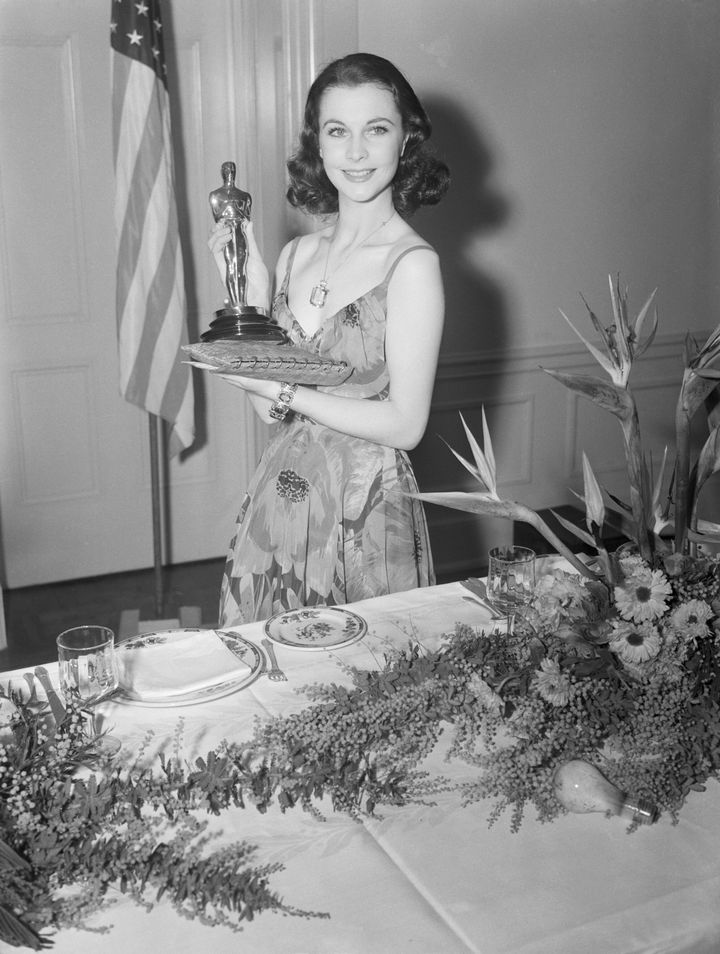
During the episode, she’s seen contemplating taking on a new part in the film version of A Streetcar Named Desire, which would go on to win the real Vivien Leigh her second Oscar.
She’s also depicted as fairly troubled, while in reality, the actress struggled with her mental health throughout her life, eventually being diagnosed with bipolar disorder.
Disney’s Song Of The South
When acting studio head Avis is contemplating whether to cast a Black actress in the lead role of her new project, Dick and Ellen bring up Song Of The South – a then-recent offering from the Walt Disney Company, described as being about “slaves [who are] so happy, they didn’t even want to leave the plantation”.
Song Of The South is unquestionably Disney’s most controversial film, and it has notably never been released on video – or, indeed, on Disney’s new streaming service – although a ride based on its animated characters, Splash Mountain, exists at three of the company’s theme parks.
While it’s often falsely claimed that the film has only been criticised or considered offensive by modern critics, it was actually slammed at the time over its depiction of Black characters, which many found played up to racist stereotypes. Many also took issue with choice to set the film on a plantation.
Hattie McDaniel

Queen Latifah portrays Gone With The Wind star Hattie McDaniel, the first Black woman to ever win an Oscar, in Hollywood, telling the shocking story of her night at the Academy Awards.
The actual night played out exactly as the character says in the show, the key difference being that Hattie was allowed in the room for the ceremony, although she was not allowed to sit with her co-stars.
Disappointingly, after Hattie’s win, the rest of the cast then spent the night at a party that, as a Black woman, she was not allowed to attend.

The show also depicts Hattie – who was married to four men in her lifetime – as the lover of fellow star Tallulah Bankhead, shown as a regular at George Cukor’s party.
“Tallulah Bankhead is on the record a couple of times talking about it,” Ryan Murphy said recently.
“We don’t make a big deal out of the fact that Hattie or Tallulah were bisexual, but they were. It was just, that part of Hollywood was filled with shame. They just want you to be one thing. Out in public, they had to pretend to be just that person, but behind closed doors they were many things. I wanted to be true to that.”
The Wizard Of Oz
Towards the end of the show, an editor reveals he’s saved the fate of Peg by copying the film, to stop heavy-handed producers from making too many cuts.
He claims he did the same thing while working on The Wizard Of Oz, suggesting that MGM wanted to cut the signature song, Over The Rainbow, from the film.
This is, in fact, true, with studio bosses feeling the opening number slowed down the pacing of the film. Over The Rainbow would go on to win The Wizard Of Oz one of its two Oscars, not including an honorary win for Judy Garland.
The 20th Academy Awards
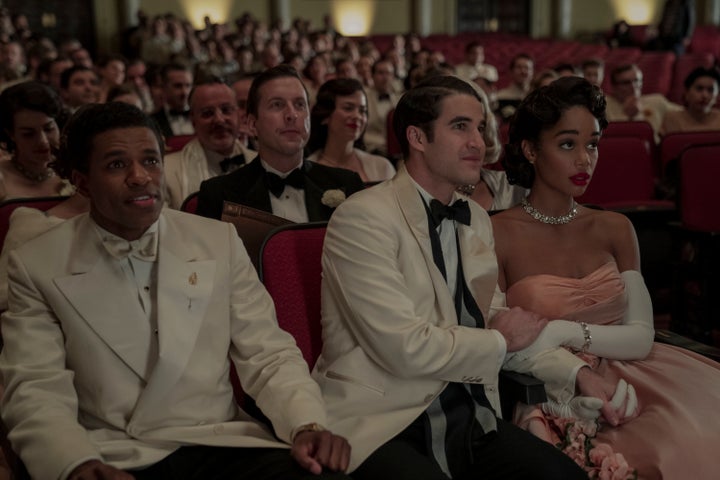
Hollywood concludes with a reimagined verison of the 20th Academy Awards, which took place in 1948.
While Peg pretty much swept the board in the TV show, that year’s Oscars were actually a mixed bag, with no film proving especially more popular with the Academy than any other. All of the films mentioned on screen were actually nominated that year, and Edmund Gwenn really did win for his portrayal of Santa in Miracle On 34th Street.
In the show, several fictional Oscars historical moments are made, including Archie becoming the first Black winner in the Best Original Screenplay. In fact, no Black writer would win this award until 2018, when Jordan Peele picked it up for Get Out.
Similarly, while Camille Washington picks up Best Actress for her performance in Peg, there were no Black winners in this category until more than 50 years after Hollywood is set.
Halle Berry became the first – and, regrettably, only – woman of colour to be named Best Actress in 2002, for her role in Monster’s Ball.
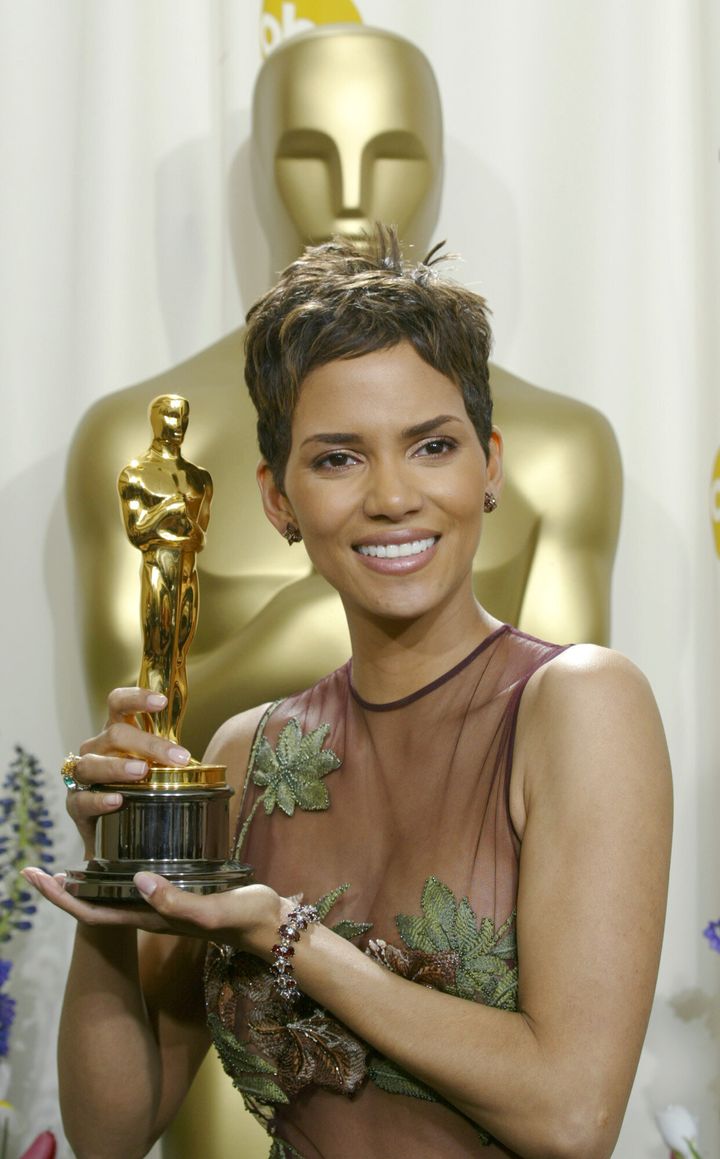
She famously addressed this in her acceptance speech at the time, dedicating her victory to “every nameless, faceless woman of colour that now has a chance because this door tonight has been opened”.
However, in 2016, she said: “I believed with every bone in my body that this was going to incite change because this door, this barrier, had been broken.
“To sit here almost 15 years later, and knowing that another woman of colour has not walked through that door, is heartbreaking. It’s heartbreaking, because I thought that moment was bigger than me. It’s heartbreaking to start to think maybe it wasn’t bigger than me. Maybe it wasn’t. And I so desperately felt like it was.”

